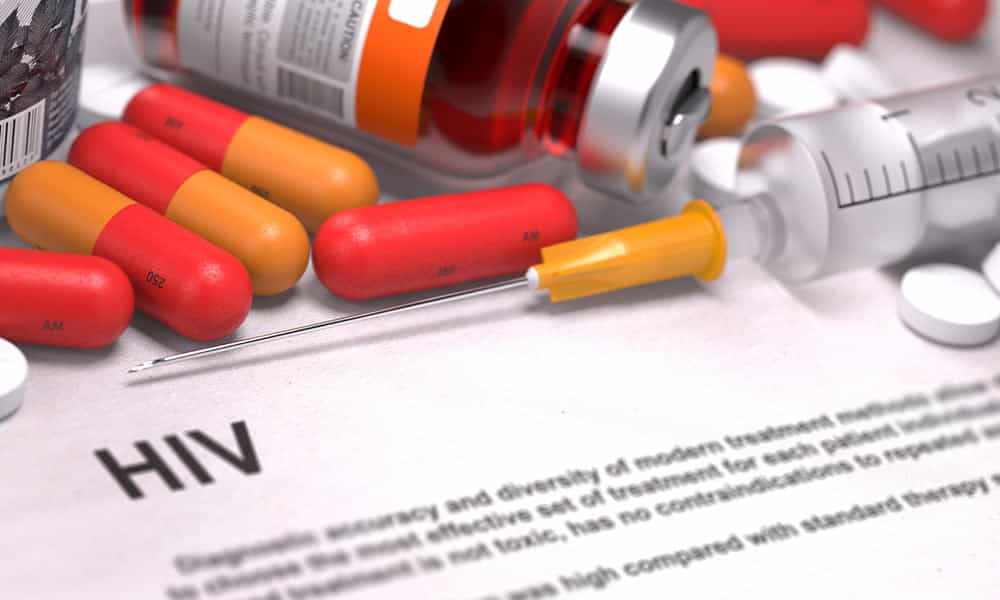Currently there is no cure for the eradication of HIV infection.
The treatment of HIV infection consists in controlling the virus through a combination of drugs that block the replication of the virus, reducing viral load and consequently the destruction of the immune system.
In Western countries, much of the success achieved in reducing the spread of HIV is due to the results of scientific research that has allowed the identification of drugs with potent antiviral activity.
In 1987 the first antiretroviral drug, zidovudine (Azt), was introduced, and in the following years other drugs with different mechanisms of action were added.
In 1997 was introduced a new category of antiretroviral drugs, protease inhibitors, capable of hindering the viral enzyme necessary for the production of the outer coating of the virus.
In recent years, other new classes of antiretroviral drugs have been introduced, including:
Fusion inhibitors
which block the entry of HIV into the host cell by preventing the penetration of the viral genome into the host cell
Integrase inhibitors
which inhibit the integration of the HIV genome into the host cell DNA, thus limiting viral replication
Ccr5 inhibitors
which inhibit the Ccr5 receptor of the host cell, blocking virus entry.
Due to the strong tendency of HIV to mutate, it is necessary not only to find new drugs, but also to administer several antiretroviral drugs simultaneously (combination therapy). The aim is to minimize or at least delay the emergence of viral strains that are resistant to antiretroviral drugs.
Currently, HIV-positive people are offered a highly effective therapy, called Haart (Higly Active Anti-Retroviral Therapy), which consists of a combination of several antiretroviral drugs. However, it must be kept in mind that the current therapeutic strategies, although very effective, do not allow the cure of the infection, but allow to keep it under control. Through the use of antiretroviral treatment, today an HIV positive subject has a life expectancy similar to that of an uninfected subject, with a good quality of life.
Currently, new classes of drugs aimed at stimulating and supporting the immune system, rather than direct antiviral action, are being tested. In addition to drugs, many studies have been underway for several years to develop a vaccine that can prevent infection among HIV-negative people, or can improve the course of the disease in those already infected.
You may also like
Symptoms of multiple sclerosis in women
Multiple sclerosis (MS) is an autoimmune disease that affects the central nervous system, causing a variety of symptoms in women of all ages. MS is a chronic disease that progressively evolves and can have negative consequences on the quality of life of affected women. One of the main symptoms of MS in women is fatigue.… Continue reading Symptoms of multiple sclerosis in women
Symptoms of multiple sclerosis in men
Multiple sclerosis (MS) is a chronic disease of the central nervous system that affects millions of people worldwide, including a significant number of men. MS is an autoimmune disease that affects myelin, a substance that surrounds and protects nerve cells in the brain and spinal cord. This impairs the brain’s ability to communicate with the… Continue reading Symptoms of multiple sclerosis in men
What is atopic dermatitis and which treatments are most suitable
Atopic dermatitis, also known as endogenous eczema, is a benign disease with a multifactorial aetiology, which, together with asthma and allergic rhinitis, is one of the atopic diseases, i.e. diseases related to the tendency of certain (atopic) individuals to manifest amplified immune responses to small amounts of allergens. We distinguish two forms of atopic dermatitis… Continue reading What is atopic dermatitis and which treatments are most suitable
Atopic dermatitis: what it is and its symptoms
The aetiopathogenesis of atopic dermatitis The exact aetiopathogenesis of atopic dermatitis is not known, but certainly involves genetic and environmental factors. Atopic dermatitis is often associated with elevated serum levels of total IgE, the immunoglobulins that are formed following an allergic and immunological reaction, and the presence of specific IgE directed towards aeroallergens or food… Continue reading Atopic dermatitis: what it is and its symptoms
